This post may contain affiliate links. If you make a purchase through a link, I may receive a small commission, at no cost to you. These commissions help keep this website up and running, and I thank you for your support. Read my full disclosure here.
 Dalmatian Prosciutto
Dalmatian Prosciutto
Dalmatian prosciutto is a cured meat product, made from fresh pork ham with bone. Production of prosciutto in Dalmatia dates back to Ancient Roman times. Roman legionaries preserved their pork meat by smoking and salting it. These days, it is made using traditional methods. The fresh pork is salted with gorgeous Croatian sea salt (see more about this below), smoked, and matured no less than 12 months. The uniqueness of a Dalmatian prosciutto comes from its traditional and natural production process that excludes adding any preservatives and/or additives. In fact, Dalmatian prosciutto must not contain any additives, the only thing that’s allowed to be added is sea salt.
Dalmatian prosciutto is absolutely delicious served with some Croatian pag cheese, wine, and preserved and dried fruit (more about these below).
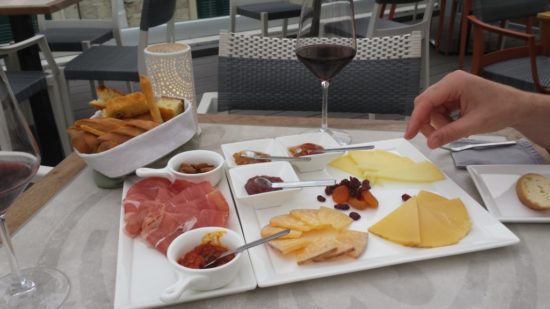
Pag Cheese
Pag Cheese is Croatia’s famous sheep milk cheese from the island of Pag. Pag has a long tradition of cheese making. It’s sheep graze on the islands salty and aromatic vegetation which gives the sheep milk a unique taste. It has won many international awards including the recently being voted the ‘Best in The World’ at International Awards in the UK. You will find it sold all over Croatia.
Olive Oil
Everybody usually thinks of Greece and Italy when they think of olives, but Croatia has a similar climate and also produces gorgeous olive oil. The olives used to produce this Extra Virgin olive oil is naturally grown on an island within the Kornati National Park, which stretches along the Dalmatian Coast on the Adriatic Sea nestled between Italy and Croatia. This olive oil is great for dipping, poured over grilled meat, fish, chicken, and salads.
Wine
Greek settlers originally introduced vineyards to the Croatian coast in the 5th century BC and wine production has flourished ever since. Croatian wines are strictly labelled according to their origin. There are some 300 official wine regions divided generally into coastal and interior wines. The majority 67% of wine is white and produced in the interior while 32% is red and produced along the coast.
Pelješac Peninsula, which is north of Dubrovnik and roughly half way to Split in the wine region of Dalmatia. Postup are made from the Plavac Mali grape, which are similar to Zinfandel grapes. These grapes produce Croatia’s best red wines. As the Pelješac Peninsula is close to Dubrovnik, it can easily be explored on a day trip. If you want to visit to do some wine tasting, then use my guide to the Pelješac Peninsula, which lists the vineyards and beautiful sights of this area.
Stone Souvenirs
If you are visiting the island of Brač like we did, then you will find a beautiful selection of stone made souvenirs. In the markets you will find a variety of stone pieces, including jewellery, clocks, vases, bowls, spice grinders and more. You can even visit the Pučišća Stonemasonry School at the centre of the island.
Lavender
You will see aromatic lavender being sold everywhere you go in Croatia. This lavender is a 100% Croatian and is made without pesticides and is hand-picked and dried under the Mediterranean sun. Lavender bags are perfect for placing in your drawers to give your clothes a gorgeous scent and to guard against moths. I love to place them in a room to give it that smell of the Mediterranean.
Croatian Cookbook
Create some delicious Croatian dishes using this cookbook Dalmatia Recipes from Croatias Mediterranean Coast. Alongside more than 80 traditional recipes, the book also tells the story of Croatia in words and stunning photography, giving you the opportunity to be transported back to the shores of Croatia. Relive your holiday memories every time you open it.
Neck Ties
Croatia invented the cravat necktie. They started the tie trend during the 17th century, when the Perisian’s took a fancy to the traditional small, knotted neckerchiefs worn by Croatian mercenaries. It became the latest fashion accessory which was later picked up by French aristocracy which then of course catapulted it into an international trend (everyone copied the French trend setters). They have stood the test of time and remain popular to this day.
Salt
There was a time when Croatia’s salt was so valuable that wars were fought over them. We visited the walled town of Ston whose seven kilometres of walls were built to protect the salt pans, which are still making salt to this day. This Croatian Sea Salt comes from Solana Nin, one of the oldest salt pans in Europe dating back to Roman times. It contains no additives, preservatives, or anti-caking agents and has a distinctive, delicate flavor. Become a serious foodie by skipping the boring table salt and sprinkling some of this gourmet Croatian sea salt over your meals. It’s also perfect for making salted caramels.
Fruit Spread
During our 2 week holiday in Croatia, the figs were gorgeously purple, plump, and ripe. They grew wild everywhere we went and we would pluck them from the branches and snack on them as we strolled. You can take home this delicious Dalmatian fig spread. It goes perfectly with pag cheese and Dalmatian prosciutto.
You will find a range of gorgeous fresh fruit in Croatia. You take some Croatian fruit home as a souvenir with this range of delicious Dalmatian fruit spreads including quince spread, plum spread, and sour cherry spread.
Licitar Hearts
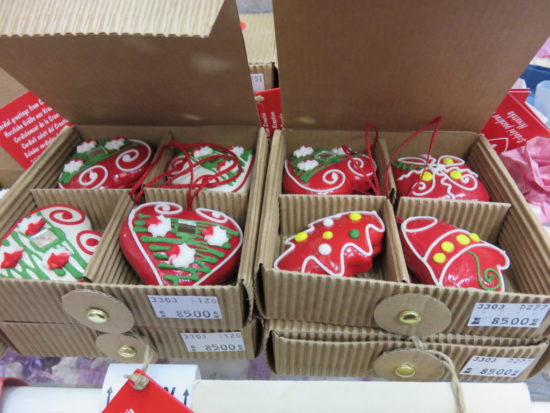
We saw these adorable little red hearts in most of the souvenir shops as we visited around Croatia. They are intricately decorated with little messages or images on them. The ones sold in the souvenir shops are often made of plastic, but they are traditionally made using honey, flour, eggs, water and natural colours. Dating back to the 16th century, they require a lot of time and skill to create, so are made by skilled artisans. They are used as an ornamental gift, often given at celebrations of love such as weddings and St. Valentine’s Day and also used to decorate Christmas trees.
Truffles
If you are flush with cash and love to indulge, then buy some delicious Croatian truffles. The historical county of Istria, Croatia is famous for truffles. Its forests boast three types of black truffles and the Motovun forest is one of the most important areas for white truffle hunting in Croatia. You can actually source your own underground fungus by going on a truffle hunting tour in Motovun. The truffle season runs from September until December. Otherwise, head to a delicatessen and buy yourself a truffle. When buying truffles, you should smell the truffle and choose one you like the most. A fresh truffle should have a vibrant black or dark brown colour on the outside and lively white veins on the inside. If the truffle looks dull or has limited veins, it may have been harvested too early. The truffle should also feel firm. If you are on a budget, then you could buy some truffle infused oil instead.

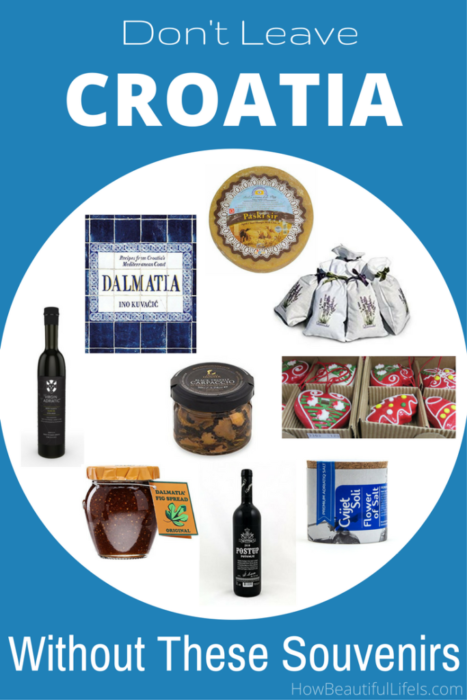 Dalmatian Prosciutto
Dalmatian Prosciutto






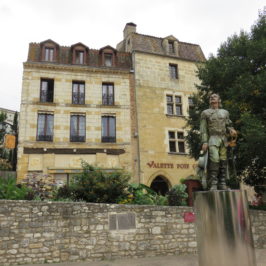
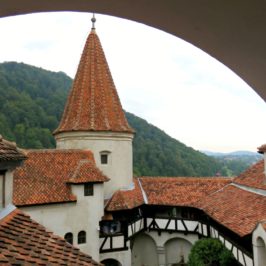
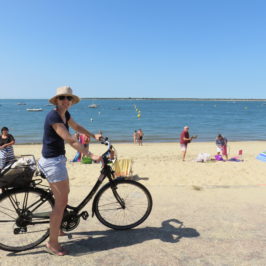
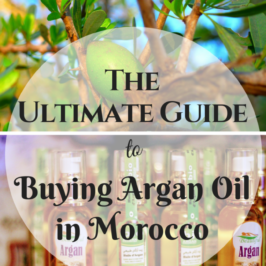


Leave a Reply